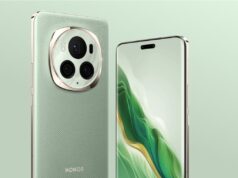In the crowded smartwatch market of 2025, Apple continues to dominate as the number one brand with its Series 10 and Ultra 2 models consistently earning top positions in expert reviews and consumer surveys.
Based on the latest industry testing and market analysis, the Apple Watch remains the leading smartwatch brand due to its sleek design, unparalleled app ecosystem, and accurate fitness tracking capabilities. The company’s commitment to innovation and user experience keeps it ahead of competitors despite strong challenges from Google and Samsung.
For Android users, Google’s Pixel Watch 3 and Samsung’s Galaxy Watch 6 have emerged as worthy alternatives, offering excellent integration with Android smartphones and impressive health monitoring features. Other brands like Amazfit, OnePlus, Garmin, and Huawei are also making significant inroads by focusing on specialised features such as extended battery life, robust fitness tracking, or competitive pricing.
The smartwatch industry continues to evolve with brands differentiating themselves through unique selling points rather than trying to be all things to all users. While Apple maintains its crown for overall quality and iPhone compatibility, the best choice ultimately depends on your specific needs, budget, and smartphone ecosystem.
Key Takeaways
- Apple dominates the smartwatch market in 2025 with its Series 10 and Ultra 2 models offering superior app selection and fitness tracking.
- Google’s Pixel Watch 3 and Samsung’s Galaxy Watch 6 lead the Android smartwatch segment with excellent smartphone integration.
- Brand preference should align with your specific requirements including smartphone compatibility, desired features, and budget constraints.
Leading Brands in the Smartwatch Industry
The smartwatch market is dominated by several key players who continue to innovate with advanced features and designs. Apple and Samsung maintain significant market share, while brands like Garmin focus on specialised fitness capabilities, and newcomers like Xiaomi grow through value-oriented offerings.
Apple Watch Series and Its Variants
According to The Watch Prince, Apple remains the undisputed leader in the smartwatch industry with its 2025 lineup including the Apple Watch Series 10, Apple Watch SE, and Apple Watch Ultra 2. The Series 10 introduces improved health monitoring capabilities with enhanced sensors for more accurate heart rate and blood oxygen measurements.
The Apple Watch Ultra 2 stands out as the premium option according to ZDNet’s testing, offering exceptional durability with its titanium case and up to 36 hours of battery life. This model targets outdoor activities with precision GPS and depth gauge for diving.
The more affordable Apple Watch SE provides core functionality at a lower price point, making Apple’s ecosystem accessible to more users. All models benefit from the seamless integration with iPhone and the vast App Store selection.
Apple’s watchOS continues to receive regular updates, ensuring older models maintain functionality while new ones showcase cutting-edge features like crash detection and advanced workout metrics.

Samsung’s Galaxy Watch Lineup
Samsung holds the second position in the smartwatch market with its Galaxy Watch series. The Galaxy Watch 7 and the more affordable Galaxy Watch FE (Fan Edition) feature prominently in PCMag’s top tested picks for 2025.
These watches run on Wear OS with Samsung’s One UI overlay, offering a balance between functionality and user-friendliness. The Galaxy Watch 7 boasts an always-on display with vibrant AMOLED technology and comprehensive health tracking features including ECG and body composition analysis.
Samsung’s BioActive sensor combines multiple health metrics into one compact unit, allowing for more space-efficient design. The watches excel in fitness tracking with automatic workout detection for numerous activities.
Battery life typically ranges from 24-40 hours depending on usage, with power-saving modes extending this significantly. Samsung’s integration with Android phones is particularly strong, though cross-platform compatibility has improved in recent models.
Garmin’s Diverse Portfolio
Garmin has carved out a significant niche in the smartwatch market by focusing on specialised fitness and outdoor features. Their diverse range includes the Venu Sq 2, which appears in PCMag’s top picks for 2025.
Garmin watches excel in GPS tracking accuracy, with multi-band GPS in premium models offering precision even in challenging environments like urban canyons and dense forests. Battery life is exceptional, with some models lasting weeks rather than days between charges.
The brand offers specialised watches for specific activities including running, cycling, swimming, golfing, and hiking. Advanced metrics like VO2 max, training load, and recovery time provide serious athletes with actionable insights.
While Garmin’s interfaces may appear less polished than Apple or Samsung, they prioritise functionality and readability in outdoor conditions. Their Garmin Connect platform provides comprehensive analysis of fitness data collected across various sports modes.
Growth of Xiaomi in the Smartwatch Space
Xiaomi has experienced remarkable growth in the smartwatch sector, as noted in the BBC report highlighting the rise of Chinese manufacturers in the global market. Their strategy combines affordable pricing with impressive specifications and sleek design.
Xiaomi smartwatches typically offer extended battery life, often reaching 14+ days on a single charge—significantly outperforming premium competitors. This longevity comes without sacrificing essential features like heart rate monitoring, sleep tracking, and activity recognition.
The brand’s watches run on a proprietary operating system that prioritises efficiency over app ecosystem depth. While this limits third-party app availability, it contributes to better battery performance and simpler operation.
Xiaomi’s success demonstrates the growing demand for value-oriented wearables that deliver core functionality without premium pricing. Their watches particularly appeal to first-time smartwatch buyers and those prioritising battery longevity over ecosystem integration.
Innovations by Google and Others
Google has strengthened its position in the smartwatch market with the Pixel Watch 3, which features prominently in The Verge’s list of best Android smartwatches for 2025. This third-generation device represents Google’s most refined wearable yet.
The Pixel Watch utilises Google Wear OS to deliver a clean, intuitive interface with tight integration to Google services. Its distinctive circular design with virtually no bezel creates an immersive display experience despite its compact form factor.
Other innovative manufacturers like OnePlus with their Watch 2 and Amazfit with the Active 2 are mentioned in The Verge’s recommendations, showing the diversification of the Android smartwatch ecosystem. TicWatch also continues to offer compelling alternatives with competitive pricing.
Beyond traditional watches, the market is expanding into alternative wearables like smart rings that offer health tracking in less obtrusive form factors. These innovations challenge conventional smartwatch manufacturers to continually improve their offerings and find unique value propositions.
Key Features That Define the Best Smartwatches
Modern smartwatches combine sophisticated health tracking, seamless connectivity, innovative designs, and robust safety features to enhance daily life. The best models excel in these areas while providing intuitive user interfaces and reliable performance.
Health and Fitness Tracking Capabilities
The health monitoring capabilities of premium smartwatches have advanced significantly in 2025. Most high-end models now include comprehensive heart rate monitoring systems that work continuously throughout the day and night, providing detailed insights into cardiovascular health.
Blood oxygen monitors have become standard in top-tier watches, allowing users to track SpO2 levels—particularly useful for sleep analysis and altitude adaptation. Many watches now incorporate ECG functionality to detect irregular heart rhythms.
Advanced fitness tracking features now extend beyond basic step counting to include automatic workout detection, detailed metrics for dozens of activities, and personalised coaching. The Samsung Galaxy Watch Ultra particularly stands out for its detailed sleep analysis and comprehensive workout modes.
Recovery metrics have also gained prominence, with watches analysing your heart rate variability and sleep quality to recommend optimal training intensity and rest periods. This holistic approach helps you achieve better fitness results while reducing injury risks.
Connectivity and Communication Enhancements
Modern smartwatches offer robust connectivity options that keep you linked to your digital life. Bluetooth 5.0 or newer standards enable faster data transfer and more stable connections with your smartphone, while consuming less power.
Standalone cellular connectivity has improved dramatically, allowing many watches to function independently without a paired phone. You can make calls, send messages, and stream music directly from your wrist. The Apple Watch Series 10 excels with its unmatched selection of third-party apps and communication tools.
Wi-Fi capabilities enable faster software updates and app installations. GPS accuracy has also improved substantially, with multi-band GPS providing precise location tracking even in challenging environments like dense urban areas or forests.
Voice assistants have become more capable and responsive, allowing you to control smart home devices, set reminders, or answer questions directly from your wrist. Integration with messaging platforms means you can reply to notifications with voice dictation, quick responses, or even tiny keyboard options.
Design and Display Innovations
Sleek design and display technology have evolved dramatically in recent smartwatches. Premium models now feature OLED displays or micro-LED technology that offer vibrant colours, perfect blacks, and better power efficiency than previous generations.
Always-on displays have been optimised to show essential information while minimising battery drain. The Apple Watch Ultra 2 stands out with its exceptionally bright display that remains visible even in direct sunlight.
Customisability has expanded with hundreds of watch faces available, many allowing complications (small information widgets) to display your most-needed data at a glance. Physical designs have diversified to include both traditional circular faces and more modern rectangular options.
Materials have also improved, with options ranging from lightweight aluminium to premium titanium and ceramic. Screen durability has advanced with stronger glass compositions that resist scratches and impacts better than ever before.
Safety Features and Durability
Modern smartwatches incorporate impressive safety capabilities that could prove life-saving. Crash detection technology can automatically contact emergency services if it detects a severe fall or accident, providing your location and vital medical information.
Emergency SOS features allow you to quickly call for help with dedicated buttons or gesture combinations. Some models include noise monitoring to warn you of potentially damaging sound levels, and irregular heart rhythm notifications that can detect signs of atrial fibrillation.
Water resistance has become a standard feature, with many premium watches rated for swimming, snorkelling, and even recreational diving up to 100 metres. The Apple Watch Ultra 2 offers exceptional ruggedness for outdoor adventurers.
Battery life varies significantly between models. While some require daily charging, others like the OnePlus Watch 3 can last multiple days on a single charge. Power-saving modes can extend battery life during critical situations or longer adventures away from charging options.
Technical Specifications That Matter
When choosing a smartwatch, understanding the key technical specifications can make all the difference in finding a device that meets your specific needs. The right combination of battery performance, display quality, and sensor accuracy determines both daily usability and long-term satisfaction.
Battery Life and Charging Technologies
Battery duration varies significantly across smartwatch brands. Apple Watch Ultra 2 offers impressive battery life compared to standard Apple Watch models, lasting up to 36 hours on a single charge. Garmin watches excel in this category, with some models providing battery life of 7+ days in smartwatch mode.
Charging technologies have also evolved considerably. Wireless charging has become standard on premium models from Apple and Samsung. Fast charging capabilities allow some watches to gain a full day’s power in just 30 minutes.
Power-saving modes extend battery life when needed. Many watches automatically disable certain features like always-on displays or continuous heart rate monitoring to preserve battery during low power states.
Battery management algorithms have improved, with AI-powered systems learning usage patterns to optimise power consumption based on your daily habits.
Display Quality and Types
OLED displays dominate the premium smartwatch market, offering vibrant colours and deep blacks while conserving battery. Apple’s Retina display technology provides excellent visibility even in bright sunlight, with the Ultra 2 featuring exceptional brightness levels.
Display resolution affects readability and image quality. Higher pixel densities create sharper text and icons, particularly important on smaller watch faces. Most premium smartwatches now offer at least 300 ppi (pixels per inch).
Always-on display technology has become increasingly efficient. This feature allows you to glance at your watch without raising your wrist or tapping the screen.
Touch sensitivity and response times vary between models. Premium watches offer smoother scrolling and more responsive interfaces, enhancing the overall user experience.
Sensors and Accuracy
Heart rate monitors have become increasingly sophisticated. Optical sensors use light to detect blood flow, while ECG capabilities in watches from Apple, Samsung, and others provide clinical-grade heart rhythm assessment.
GPS accuracy determines the reliability of distance and pace measurements during outdoor activities. Multi-band GPS systems, like those in the Apple Watch Ultra 2, provide superior tracking in challenging environments such as dense urban areas or forests.
Modern smartwatches incorporate multiple additional sensors:
- Altimeters for elevation tracking
- Accelerometers for step counting and fall detection
- Gyroscopes for orientation sensing
- Pulse oximeters for blood oxygen measurement
Sensor fusion algorithms combine data from multiple sensors to improve accuracy. This technology helps filter out noise and anomalies, delivering more reliable health and fitness metrics for daily monitoring.
Market Trends and Consumer Preferences
Apple dominates the smartwatch industry with approximately 30-44% market share, making it the number one brand for smart watches globally. This leadership position has been maintained through consistent innovation and robust ecosystem integration.
The smartwatch market continues to grow, albeit at a slower pace than in previous years. Consumer interest has begun shifting towards alternative wearable technology like smart rings, indicating that brands must continue to innovate to maintain user engagement.
In the UK specifically, Apple commands 44% of the market for personal smart watches and fitness trackers, showing particularly strong regional dominance.
Health and fitness functionality remains a primary driver of smartwatch purchases. Features like heart rate monitoring, sleep tracking, and workout detection have become standard expectations rather than premium additions.
Hybrid watches are gaining traction among users who prefer traditional aesthetics with smart capabilities. These devices offer longer battery life and classic designs while still providing notifications and basic tracking.
Battery life and durability continue to be key factors in consumer purchasing decisions. Devices that can go multiple days without charging tend to receive more favourable reviews from everyday users.
Price sensitivity varies by market segment. While premium models like the Apple Watch Ultra 2 command higher prices, manufacturers are also releasing more affordable options to capture budget-conscious consumers.
Key market segments by price:
- Premium (£300+): Feature-rich flagship models
- Mid-range (£150-300): Balance of features and affordability
- Budget (Under £150): Basic functionality, longer battery life
AI-powered health insights represent the next frontier for smartwatch development, with brands investing heavily in algorithms that can provide more personalised guidance based on collected data.
Looking Towards the Future
Apple dominates the smartwatch market in 2025, with the Apple Watch Ultra 2 leading as the premier choice for consumers. This position is confirmed by multiple expert reviews highlighting its rugged design, excellent battery life and vibrant display.
The smartwatch industry continues to evolve at a rapid pace. Manufacturers are investing heavily in biometric sensors that can monitor more health metrics with clinical-grade accuracy. Blood glucose monitoring without skin puncture is expected to become standard in premium models by late 2025.
AI integration is transforming how we interact with our wrist-worn devices. Advanced voice assistants can now understand context better and perform complex tasks through natural conversations rather than rigid commands.
Battery technology is seeing significant improvements. New power management systems and high-density batteries promise to extend usage from days to potentially a full week between charges.
Display technologies are advancing with more flexible screens and improved brightness for outdoor visibility. Micro-LED technology is beginning to replace OLED in premium models, offering better power efficiency and longevity.
Connectivity options continue to expand, with more watches offering independent cellular connections. This allows for true phone-free usage whilst maintaining full communication capabilities.
Brand
Key Future Innovation
Apple
Health prediction algorithms
Samsung
Advanced sleep coaching
Ambient computing integration
OnePlus
Extended battery technology
Sustainability has become a major focus, with brands developing more repairable designs and using recycled materials in construction. Several manufacturers now offer trade-in programmes to reduce electronic waste.














